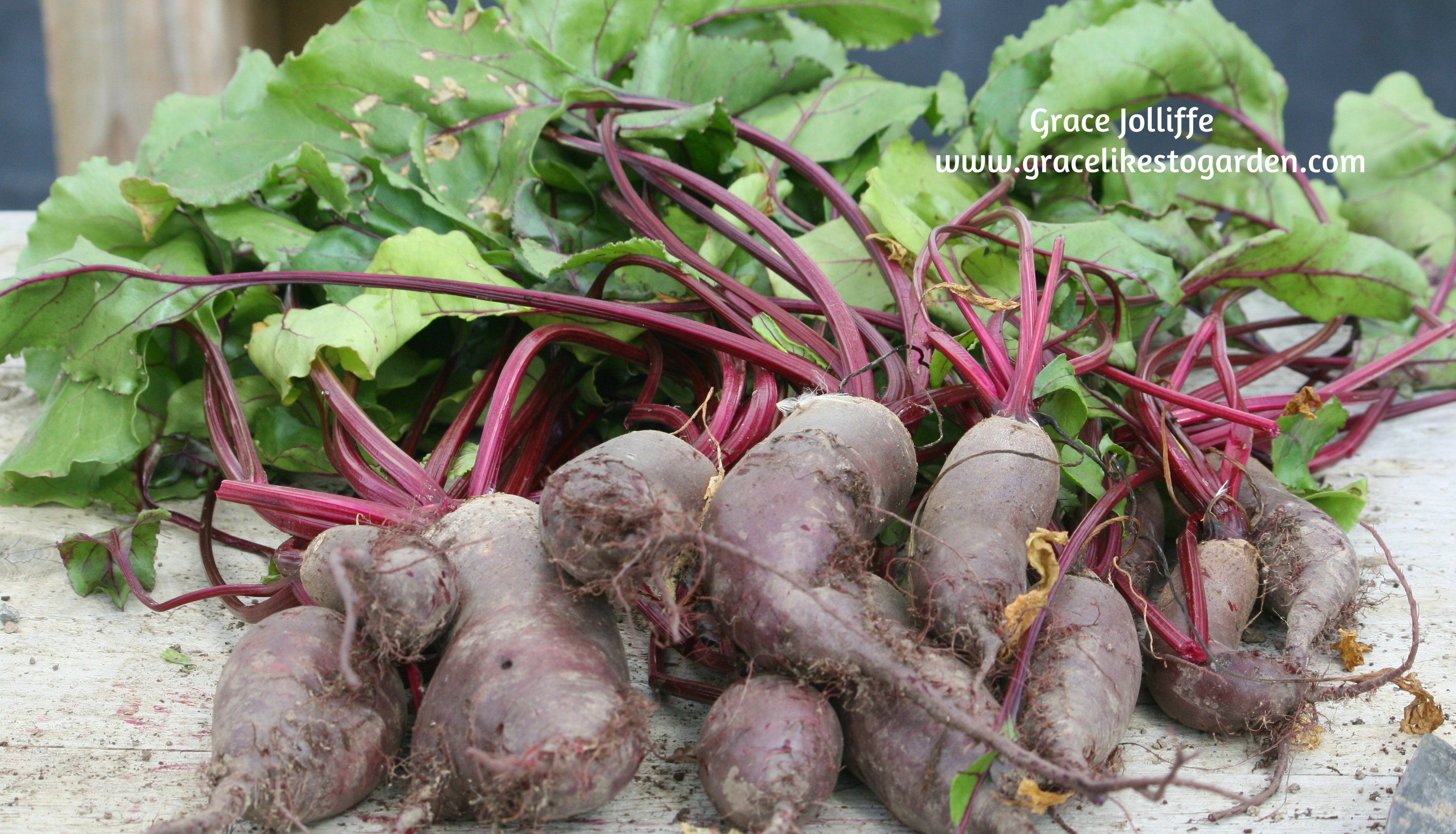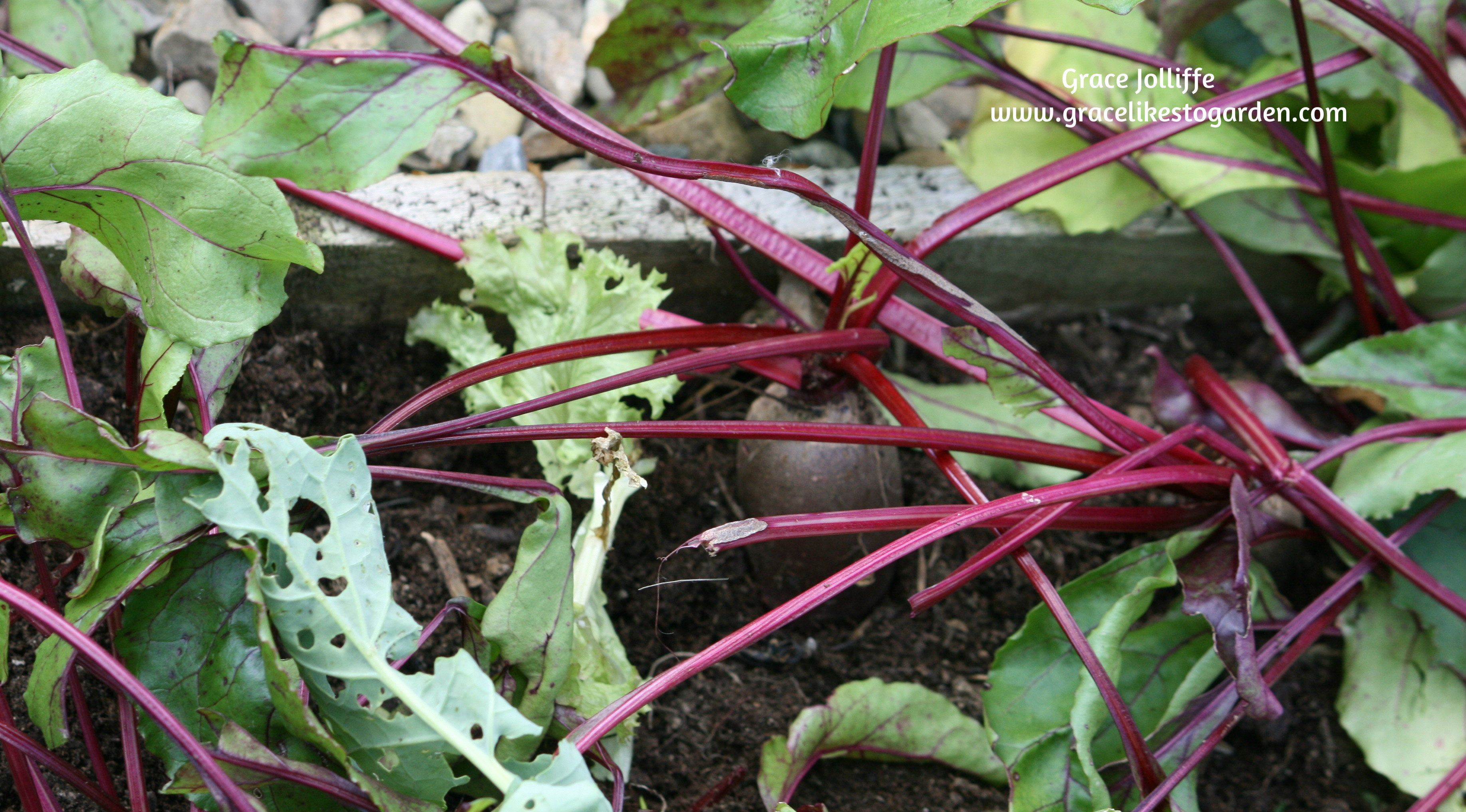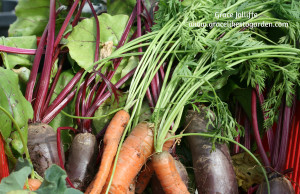 Beetroot belong to the chenopodiaceae family and originated from the seashore, which could be why I have managed to grow them so well in my garden – I am just a few minutes from the rocky shoreline of Galway bay.
Beetroot belong to the chenopodiaceae family and originated from the seashore, which could be why I have managed to grow them so well in my garden – I am just a few minutes from the rocky shoreline of Galway bay.
Beetroot have coarse veiny leaves. Some people enjoy eating the leaves in salads but I am not one of them as I think there are much tastier alternatives. For me the root rules.
BENEFITS OF EATING BEETROOT
Eating beetroot has loads of great benefits and according to the writer of this article eating beetroot can lower your blood pressure, lower your risk of heart attack and strokes as well as all sorts of other great stuff. By the way, I’m no doctor, so see one if you have medical problems.
GROWING BEETROOT IS EASY
Growing beetroot is very easy and if you can devote a decent patch of your garden, or raised bed to growing this tasty veg you won’t regret it. Here’s how:
- Remove weeds from your patch of soil or raised bed.
- Sow the beetroot seeds as thinly as you can, although this is hard as the seeds can be fiddly.
- Once they start to grow you can thin them out, leaving a couple of inches between them.
- You can try planting the thinned plants elsewhere but this is a bit hit and miss as the young plants don’t like being moved.
- Once they are grown all you have to do is dig them out. Don’t let them grow too big as they are far tastier when young.
STORING AND EATING BEETROOT
Once you taste your first homegrown beetroot you’ll soon realise that is a whole different food to those watery vinegar-soaked lumps you get in jars.
NEVER PICKLE
In my opinion vinegar and beetroot should never meet, ever. Vinegar is too strong and turns beetroot from something fresh and sweet into something sad and soggy that has a totally different taste than the beetroot you grow yourself.
GROWING BEETROOT
 I began growing beetroot very successfully in half of one of my raised beds last year. It was my first time so I wasn’t sure how well it would do. I soon regretted not planting a whole bed as it was just gorgeous and by far my favourite home grown food stuff last year.
I began growing beetroot very successfully in half of one of my raised beds last year. It was my first time so I wasn’t sure how well it would do. I soon regretted not planting a whole bed as it was just gorgeous and by far my favourite home grown food stuff last year.
All I did was mark out some drills in the bed and sprinkle in my seeds – about an inch deep and I thinned them to just a couple of inches apart. The books say a foot apart but I don’t always do what books say and mine grew just fine.
LONG AND NARROW – CYLINDRA
The variety I grew was the Cylindra from Suffolk herbs and these are longer, narrower and a whole lot nicer than the ones you see in the shops.
COLD AND WET
It’s lucky for me in cold rainy Galway bay that beetroot likes a cold wet climate so I didn’t have to do a whole lot to get them growing.
Beetroot doesn’t like acid soil or fresh manure. My garden shares the limey landscape of the Burren and I didn’t have access to fresh manure (apart from a few blobs left behind when the hens raided the veggie beds) and my beetroot grew perfectly well. I do however mulch my beds with seaweed after clearing them for the winter.
TO SOAK OR NOT TO SOAK
Some people soak the seeds before planting but I’m not that organised. I did a tiny bit of weeding in between them (being careful not to hit the plants because they will bleed easily) when the plants were small to stop them being swamped and I watered them a bit on the one or two days when it wasn’t raining.
STORING BEETROOT
I didn’t store any of my Beetroot crop as they were all eaten but I read in John Seymour’s brilliant book, The New Complete Book of Self-Sufficiency that they can be stored in peat, or moist sand.
I have no idea how well this works as I have never tried it and as I have not seen this done and being completely lacking in the moist-ometer department I’m not too sure how moist is moist when it comes to sand.
As I mentioned I don’t pickle beetroot as I think it ruins the delicate flavour, but I am sure a quick flick around the net will show you plenty of ways to do that if for some strange reason you really want to go to so much trouble to produce jar after jar of vingary-blobs.
SOWING BEETROOT
 Anyway back to growing beetroot – they can be sown from spring until late summer. The late summer sown ones will mature the following spring so you can enjoy eating them in season over fairly lengthy periods of the year even if you averse to pickling like me.
Anyway back to growing beetroot – they can be sown from spring until late summer. The late summer sown ones will mature the following spring so you can enjoy eating them in season over fairly lengthy periods of the year even if you averse to pickling like me.
By the way, if anyone knows any other easy methods of preserving do let me know. In the meantime my advice is to try and eat it all while it’s fresh.
ROSEMARY AND THYME
Those fresh, sweet, messy roots are gorgeous and particularly so when baked in the oven with a few sprigs of rosemary and thyme.
The herbs are really easy to grow as well and if you’re are not growing them already you should – they smell amazing and you can hang sprigs of it in your cupboards and wardrobes to let the smell linger and keep the moths at bay.
Back to eating beetroot. To be honest I don’t like cooking so I don’t do a lot of it and to be honest my family and friends prefer it that way, but I don’t mind a little bit of cooking if it’s easy, and cooking beetroot is very easy. So, here is my grace-proof recipe for roast beetroot.
ROAST BEETROOT
1. Wash muck from beetroot and remove leaves – be careful to leave a good couple of inches of stalks on, or they will bleed to death.
2. Place in a roasting dish with some twigs of fresh rosemary and thyme.
3. Drizzle a smidgen of oil over them.
4. Bake for about 20 minutes (this is not the bible of beetroot baking so use your own common sense – if they’re not soft when you press them with your oven gloves leave them to continue roasting until they are.
5. Sit down somewhere comfy and within smelling distance of your kitchen with a nice cup of tea and let the beautiful fragrance of the roasting herbs relax you as you wait.
ROAST BEETROOT BUTTIE
If you really want to push the boat out and make yourself a special beetroot lunch try this:
1. Butter yourself 2 nice sized slices of your favourite bread.
2. As soon as your baked beetroot is ready slice it and place it on your bread.
Again, sit down somewhere comfy, and eat it straight away while its still hot. As you are enjoying your slice of heaven remind yourself how brilliant you are for growing your own tasty lunch.
Back soon and best of luck with your gardening.
Grace
CLICK HERE – for more about how to grow vegetables.









Recent Comments